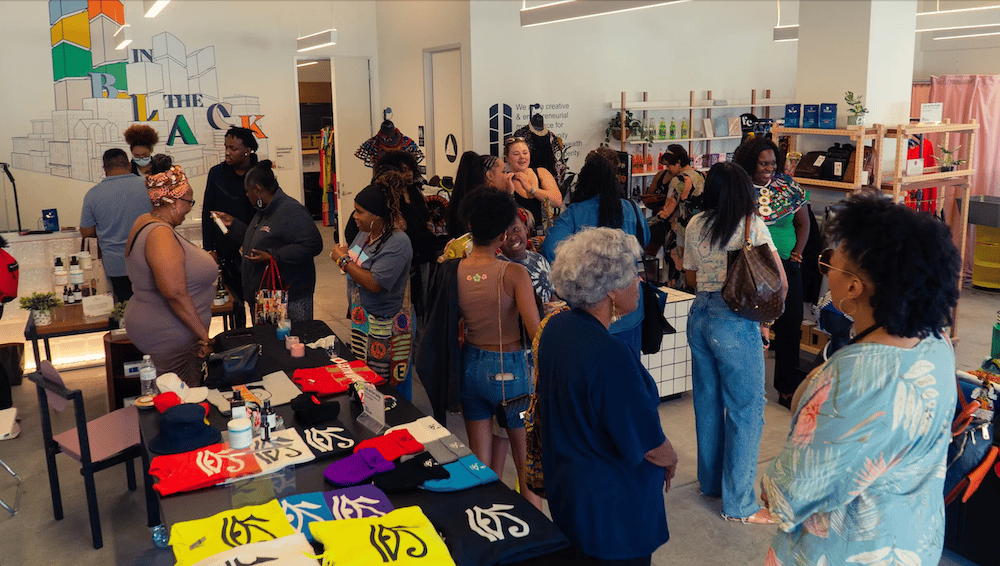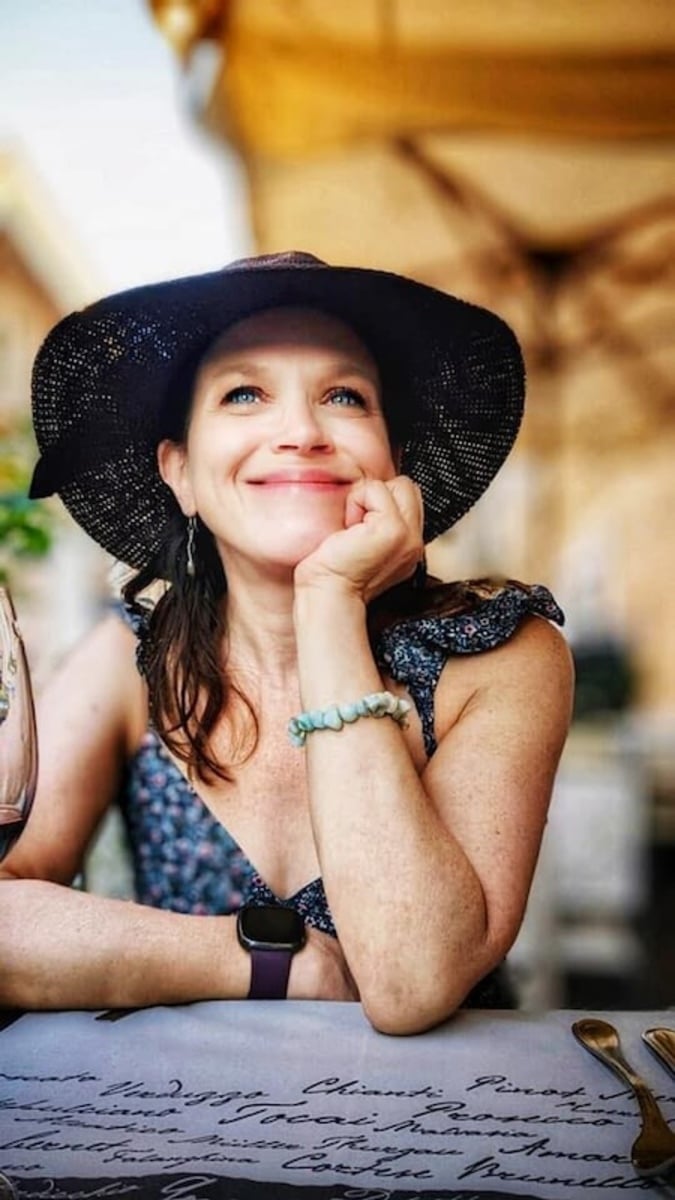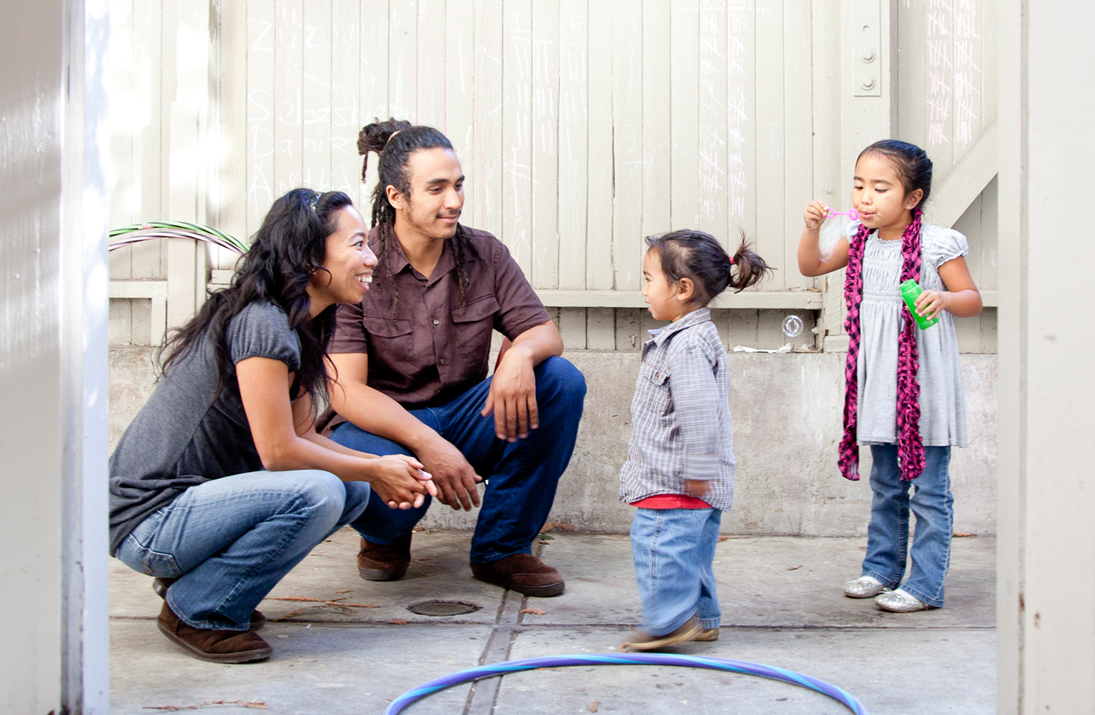
In the Black is a creative marketplace for Black led entrepreneurs. Photo from In the Black.
I love Black people. I love San Francisco. Black people also love San Francisco, but unfortunately, this adoration suffers a Lombard Street like asymmetry. Through all the startling beauty, footing on the road is temporary, gravity always wins, and any attempt to ascend the heights results in breathtaking exhaustion. Is there any space for Black people in the city? With the generational shotgun exodus of a group that gave us so much music, culture, and community – to the rising costs of everything – the only way Black people can feel valued or safe is to seek out and carve small spaces all their own. Not to separate or devalue the greater city but to breathe; to feel not like a class or history of a people, or like a guest with a conditional invitation – but to feel human, like us, like everyone else.
What is a Black space?
A Black space is somewhere where Black people can feel comfortable—full stop. Most importantly, these spaces are defined by two things: the fact that Black people work there and are served there and the fact that Black people can be themselves unapologetically. To the uninformed – to my white liberal buddies, this may feel like a ridiculous concept. There have been countless articles discussing Black-specific spaces on college campuses and others scrutinizing them. BUT, this deviation isn’t about separation in a hateful way; it’s about Black people keeping our shit together. It’s about finding an environment that celebrates us, endorses us, has fun with us, doesn’t judge us, and where we feel…fucking safe.
Got damn, safety is a beautiful thing.
Terry Williams would have loved to have felt safe in San Francisco. Terry Williams is a dog walker who was the target of multiple racist attacks – but more importantly, Terry was a Black San Franciscan. He should feel like he belongs here. He was living in his parents’ home at the time his house burned down. He is someone who loved this city through all the changes and shifts, yet he was still the target of hate and exclusion. In the city, the city that says they are diverse and liberal and that touts itself as being cool and hip and progressive, whatever the fuck that means, they end up looking like a posh South. Prolific writer James Baldwin said in Take This Hammer, “There is no distance between the facts of life in San Francisco and the facts of life in Birmingham. San Francisco is just another American city, and if you’re a black man, that’s a very bitter thing to say.”
Terry told NBC:
“This has been going on since I started my business. I have been called the N-word and other racist terms ever since I’ve walked my dogs or clients’ dogs in the park. At a certain point, it gets to be too much.”
He had never done anything. He didn’t have a record. His dogs had never caused any issues, BUT he was Black, and being Black in San Francisco means you inherently don’t belong there (because of history, redlining, urban renewal, gentrification…shit do we have to keep going through this list?) unless you’re in a service role. The Black community has been just that, the service/entertainment class, for many generations. But once they had the opportunity to become the patron class, the working or middle class, they were kicked out with the Urban Renewal, also dubbed Negro removal by Baldwin. And at this point, it’s pretty ridiculous and impossible to even think about returning to the city.
As someone from San Francisco who had to move at a young age, I always dreamed of moving back. Every time I made more money, it got more expensive, and the only way I could touch the concrete, feel the fog, or breathe in the chilly bay breeze was to work there. Whether working as a bartender or coming down to try out new food, I felt like one of the only ones – even at the Black-owned spots. It was a disconnecting, surreal experience. When a person of color serves you food (their cultural food specifically and especially) but isn’t the patron, that’s not a restaurant; that’s an ethnic food court for other people; it’s the spectator sport of diversity. It reduces people to a service class.
Until The Dream Keeper initiative.
From the website –
“The Dream Keeper Initiative is a citywide effort launched in 2021 to reinvest $60 million annually into San Francisco’s diverse Black communities. This Initiative is part of Mayor London N. Breed’s roadmap for reforming public safety and addressing structural inequities in San Francisco.”
Regardless of your feelings about Mayor London Breed, this initiative does something special. It invests in culture and community. Because of this initiative, we have more shopping on Geary Boulevard with the In The Black marketplace and can house businesses like Honey Art Studio and Minnie Bell’s Soul Movement, which are bonafide Black spaces. This initiative didn’t just subsidize groups of people as an economic thing, but did so to fund culture. This is the type of thing that will survive a city if done right.

A painting event at Honey Art Studios in the Fillmore District. Photo from the Honey Art Studios FB page.
Cities don’t have to become hollowed-out costumes of what they once were. Communities don’t have to be ethnically cleansed out of existence, left to be nothing more than murals and memories. Black spaces in San Francisco are necessary and vital so that every time you see a Black person in the city, there isn’t an automatic assumption that they don’t belong. Terry William could feel safe. You and I (given you and I are Black) can feel safe and not like there’s a shot clock ticking, counting down when we are kicked out (or arrested).
This initiative is a stance against big money (please reserve the commentary. I get it.). It’s a cry of self-determination, a call to keep cities the incredible, cool, hip, weird places that made them unique. Bookstores, vinyl shops, mom-and-pop shops, diners, taquerias, BBQ spots, etc aren’t always lucrative economically, but they are culturally lucrative. And for me (and many of you), that’s what’s really important. That’s what creates the history and allure of a city. That’s what makes it special.
Walking into Minnie Bell’s Soul Movement, you feel like you’re in somebody’s mama’s kitchen, ready to eat great, authentic soul food created with more love than hype and pretense. Crossing the threshold into Honey Art Studio, seeing the art, the living room set up with black and white photos on the walls – it tells the world that we, Black people, have roots here too, that we love this city too, that we exist and have existed here too.
Black spaces aren’t just for commerce and entertainment but a declaration.
We love here, we live here, and we belong here.
The post The Importance of Black Spaces in San Francisco appeared first on Broke-Ass Stuart's Website.









